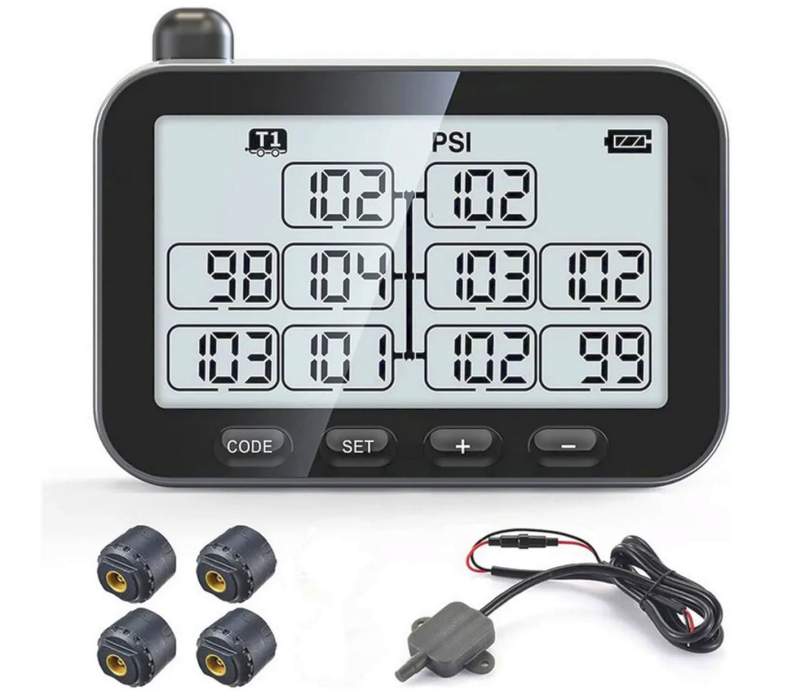Tire Pressure Monitoring Systems
In the realm of automotive safety and performance, maintaining proper tire pressure stands as a fundamental yet often overlooked aspect. Adequate tire pressure not only ensures optimal vehicle handling and fuel efficiency but also plays a crucial role in road safety. This is where Tire Pressure Monitoring Systems (TPMS) come into play, serving as vigilant guardians of tire pressure and providing drivers with real-time insights into their vehicle’s tire conditions. To learn more about tire pressure and maintenance, visit the Guta website.

The Basics of Tire Pressure Monitoring Systems
Tire Pressure Monitoring Systems, commonly referred to as TPMS, are technological marvels designed to monitor the air pressure within a vehicle’s tires and alert drivers in case of deviations from the recommended pressure levels. These systems come in two primary types: direct TPMS and indirect TPMS.
-
Direct TPMS: Direct TPMS employs individual pressure sensors mounted within each tire. These sensors continuously measure the air pressure and, in some cases, even the temperature of the tires. The data collected is transmitted to a control module.
-
Indirect TPMS: Indirect TPMS, on the other hand, relies on the wheel speed sensors of the Anti-Lock Braking System (ABS) to indirectly infer tire pressure discrepancies. It compares the rotational speed of individual wheels and detects variations caused by underinflation.
Components of TPMS
To comprehend the inner workings of TPMS, it is essential to grasp the key components that bring this technology to life.
-
Pressure Sensors: These sensors are responsible for measuring the air pressure within the tires. They use advanced technology to provide accurate readings in real-time.
-
Temperature Sensors: In certain TPMS implementations, temperature sensors monitor tire temperature, helping to account for the effects of heat on tire pressure.
-
Control Module: The control module serves as the brain of the TPMS, receiving data from the sensors and processing it to determine whether the tire pressure is within the acceptable range.
-
Dashboard Display: TPMS-equipped vehicles feature a dashboard display that shows the real-time tire pressure of each tire. In cases of low pressure, the system alerts the driver through warning symbols or messages.
How Direct TPMS Works
Direct TPMS operates on a direct measurement principle, employing specialized sensors installed within the tires themselves.
-
Sensor Placement and Communication: Each tire is equipped with a dedicated pressure sensor, typically attached to the inside of the rim. These sensors communicate wirelessly with the control module.
-
Data Collection and Transmission: The pressure sensors continually measure the air pressure and transmit this data to the control module. Some systems also incorporate temperature readings to account for fluctuations caused by driving conditions.
-
Real-time Monitoring: The control module processes the received data and compares it to the recommended pressure levels provided by the vehicle manufacturer. If a tire’s pressure falls below the specified threshold, the system triggers an alert.
-
Alerts to Drivers: When a tire’s pressure deviates from the recommended range, the TPMS promptly notifies the driver through dashboard displays, warning lights, or audible alarms. This real-time feedback empowers drivers to take immediate corrective action.
How Indirect TPMS Works
The indirect TPMS uses the Anti-Lock Braking System’s wheel speed sensors to indirectly determine tire pressure.
-
ABS-based indirect TPMS: This method capitalizes on the fact that underinflated tires have a smaller diameter and thus rotate at a different speed than properly inflated ones. The system monitors individual wheel speeds through the ABS sensors.
-
Monitoring Wheel Speed and Comparisons: Indirect TPMS continuously tracks the rotational speed of each tire. By comparing the speeds of all tires, the system can identify discrepancies that suggest varying tire pressures.
-
Detecting underinflation: If a tire’s rotational speed differs significantly from the rest, the TPMS infers that it might be underinflated. Although less precise than direct TPMS, this method still offers valuable insights into tire pressure status.
Benefits of TPMS
The integration of TPMS in modern vehicles ushers in a host of advantages that extend beyond the realm of convenience.
-
Improved Safety: TPMS significantly enhances road safety by alerting drivers to underinflated tires that could lead to decreased vehicle control, skidding, or blowouts, especially at high speeds.
-
Enhanced Fuel Efficiency: Properly inflated tires experience reduced rolling resistance, which translates to improved fuel efficiency. TPMS aids drivers in maintaining optimal tire pressure, contributing to cost savings and reduced environmental impact.
-
Extended Tire Lifespan: Overinflated or underinflated tires wear unevenly, leading to reduced tire lifespan. TPMS ensures that tires maintain the correct pressure, promoting even tread wear and longer tire life.
-
Reduced Environmental Impact: Vehicles with properly inflated tires produce fewer emissions and consume less fuel. TPMS assists in maintaining optimal tire pressure, thus contributing to a greener driving experience.
Challenges and Limitations
While TPMS offers significant benefits, it’s important to acknowledge its challenges and limitations.
-
Sensor Battery Life: Direct TPMS sensors are powered by batteries, which have a finite lifespan. Eventually, these batteries will need replacement, requiring periodic maintenance.
-
Sensor Accuracy and Calibration: TPMS sensors must be accurately calibrated to provide precise readings. Factors such as tire rotation or replacement can affect the sensor’s accuracy.
-
Cold Weather Effects: In colder climates, tire pressure can decrease due to the contraction of air. TPMS may trigger alerts in such situations, necessitating driver awareness of this weather-related effect.
-
Aftermarket Sensors: Installing aftermarket wheels or tires without compatible TPMS sensors might lead to system malfunctions or inaccuracies.
Maintenance and Troubleshooting
To ensure the continued effectiveness of TPMS, certain maintenance practices are essential.
-
Regular Sensor Check: Periodic inspection of TPMS sensors and their battery status is crucial. Ensuring the sensors are functioning optimally helps maintain accurate tire pressure readings.
-
Battery Replacement: When TPMS sensor batteries deplete, they need to be replaced promptly. This ensures uninterrupted monitoring and accurate alerts.
-
Calibration Procedures: After tire rotation, replacement, or maintenance, recalibration of the TPMS sensors is necessary to maintain accurate readings.
Future Developments in TPMS
As technology continues to evolve, TPMS is poised for further advancements.
-
Integration with Vehicle-to-Vehicle Communication: TPMS could be integrated into vehicle-to-vehicle communication systems, allowing real-time data sharing between vehicles on the road.
-
Advancements in Sensor Technology: Future TPMS sensors may utilize advanced technologies such as wireless charging, eliminating the need for battery replacement.
-
AI-powered Predictive Maintenance: AI algorithms could analyze TPMS data to predict potential tire issues and recommend maintenance actions, enhancing proactive vehicle care.






